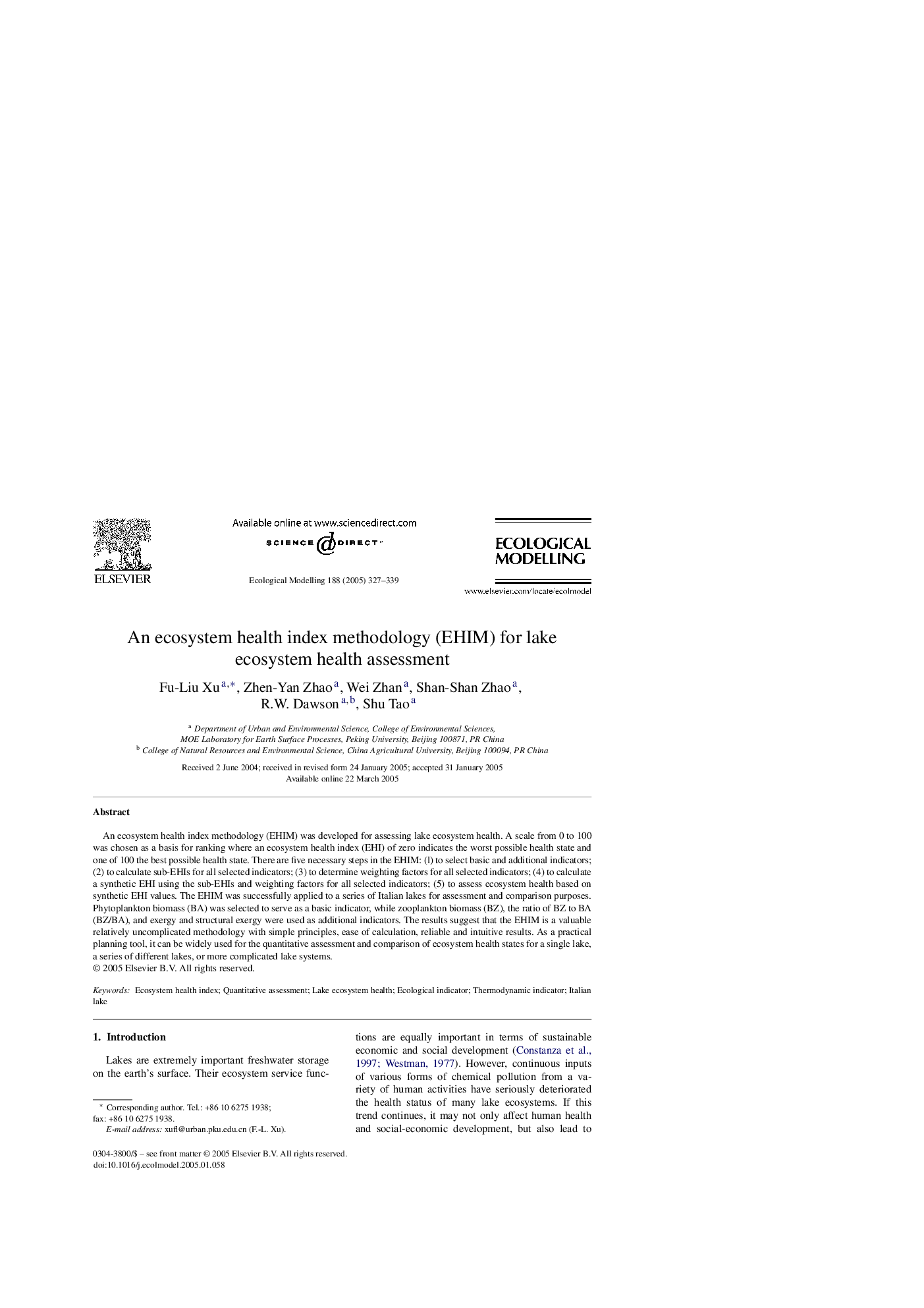| Article ID | Journal | Published Year | Pages | File Type |
|---|---|---|---|---|
| 9443520 | Ecological Modelling | 2005 | 13 Pages |
Abstract
An ecosystem health index methodology (EHIM) was developed for assessing lake ecosystem health. A scale from 0 to 100 was chosen as a basis for ranking where an ecosystem health index (EHI) of zero indicates the worst possible health state and one of 100 the best possible health state. There are five necessary steps in the EHIM: (l) to select basic and additional indicators; (2) to calculate sub-EHIs for all selected indicators; (3) to determine weighting factors for all selected indicators; (4) to calculate a synthetic EHI using the sub-EHIs and weighting factors for all selected indicators; (5) to assess ecosystem health based on synthetic EHI values. The EHIM was successfully applied to a series of Italian lakes for assessment and comparison purposes. Phytoplankton biomass (BA) was selected to serve as a basic indicator, while zooplankton biomass (BZ), the ratio of BZ to BA (BZ/BA), and exergy and structural exergy were used as additional indicators. The results suggest that the EHIM is a valuable relatively uncomplicated methodology with simple principles, ease of calculation, reliable and intuitive results. As a practical planning tool, it can be widely used for the quantitative assessment and comparison of ecosystem health states for a single lake, a series of different lakes, or more complicated lake systems.
Related Topics
Life Sciences
Agricultural and Biological Sciences
Ecology, Evolution, Behavior and Systematics
Authors
Fu-Liu Xu, Zhen-Yan Zhao, Wei Zhan, Shan-Shan Zhao, R.W. Dawson, Shu Tao,
